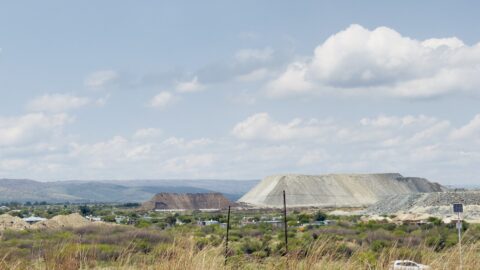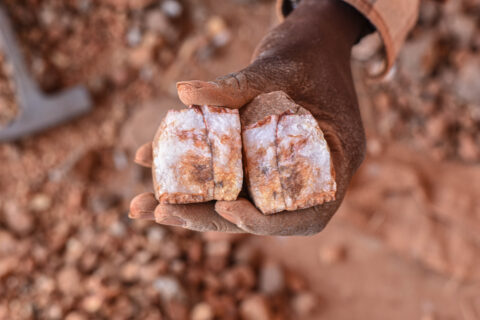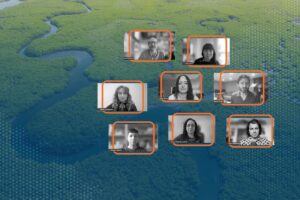Sunsets are like blazing bonfires guiding us towards darkness – whether we’re ready or not.
Dodging chaotic shade thrown jaggedly like daggers, I constantly rebuilt myself like a phoenix in the midst of smoldering midnight melancholy. The swirling backroads of Virginia’s majestic mountains both tore apart and transformed my identity, teaching me early on that transformation is unavoidable. Essentially, my climate has always been changing.
Despite its magnificent beauty, Forge Road (also known as Route 608) has always been quilted with lies, broken promises, and deception. Isolated and forgotten, older generations have sometimes referred to it as God’s landscape. It’s more like a concrete pathway to hell. In the past few decades, steadfast gentrification has blanketed the hillside, forcing farmers whose livelihoods depended on the land to completely rebuild from the bottom again. For miles, pastures were emptied and fields were plowed for the last time to make way for cumbersome suburban castles, their gates still spiking up into the sun’s raging horizon like needles in my eyes. The whittling away of those gorgeous hills once spotted with grazing cattle has covered hundreds of acres in gaudy communities. As a result, this manifested a cataclysmic split that echoed my perpetual pain. Forced tranquility seamlessly manipulated thru-travelers from denser populations as they searched for a paradise less paved.
But at five years old, I couldn’t yet tell the difference. I would have still called it an oasis.
Commonly known by locals as a racetrack for rednecks and rebels in southern Rockbridge County, Virginia, commuters typically travel Forge Road as an alternative route between Buena Vista (BV) and Glasgow. Until I was four years old, we lived in a trailer park in BV, but my mom feared my sister and I would be labeled as “trailer trash” when we started kindergarten. So, we left our well-insulated bedrooms for a drafty and cramped two-bedroom cottage at least 20 minutes from any of the neighboring towns: Buena Vista (population: 6k), Glasgow (population: 1k), and Lexington (population: 7k). My dad grew up in Lexington and Granny Elsie, his mother, maintained their family homeplace for decades. Despite the distance, Granny visited us as often as she could and helped us settle into our new home.
My mom was raised in Roanoke, the largest city in our part of Virginia. She would often tell us stories about how she’d watched farmland get sold and paved over to build a mall, parking lots, and other buildings. Joni Mitchell said it best: they’d paved paradise. But I never imagined anything like that would happen to us.
It was the summer of 1995. I had just moved into the tucked-away countryside with my mom, dad, and younger sister Sarah. Our new house, a 1930s farmette, was being freshly painted in a coat of ivory by my mom and Granny.
“Come quick!” I shrieked as the majestic fireball fiercely burned in the distance. Terrified, my Granny Elsie came running.
“What’s wrong, my dear?” she inquired, convinced of danger.
“Look,” I whispered and pointed at the screaming sky. After a moment, Granny’s face softened into a gentle smile. Wrapping our arms around each other, we fixed our gaze on the vibrant neon pink and burnt orange horizon.
I may not have been in any physical harm at that moment, but Granny saved me that day.
From that day on, it became vital for me to not only admire the world’s natural beauty, but to advocate for its existence. Years down the road, we’d sip her freshly brewed Southernly sweet tea and reflect on that evening while playing cards. Granny taught me that life is full of challenges, but she also showed me how to embrace the internalized rhythm of the natural world that pulses through my heart, spirit, and soul. For years to come, we spent countless hours celebrating our joyful adoration of the outdoors no matter the season.
Later on, Dad mirrored this sentiment. He had reluctantly left our family in 1997, but we reconnected when I was an adult. “No matter how you say it, it’s going to be a song,” he told me as we improvised a myriad of funky tunes (me on piano and vocals and him on bass or drums). And he was right.
My parents met in a rock band. Mom taught music, and Dad was a self-employed rockstar, so music was a non-negotiable part of our life. I often felt out of place around my peers. “Most likely to dig through the trash and recycle” was my so-called unofficial superlative, but it was true. In my bright stripes and funky hair, I punked my way through school, focusing more on how to save the planet than myself. I realize now those two go hand in hand.
When I was younger, I spent hours reading under the willow tree, swimming in Buffalo Creek, or writing furiously in a composition notebook. I’d wave and grin from the backseat in my mom’s car at old farmers on their rusty tractors. But, sheltered from modern culture, my sister and I also became socially awkward and immensely lonely. We spent most of our time exploring the natural world and I perfected hopping barbed wire fences and walking past grazing cows. Avoiding patties and thorny vines with finesse, we frequently hiked to Buffalo Creek to wade into the gently flowing water.
For my sister and I, our daily life over the years was a performance, and we were not allowed to opt out of that mindset under our mom’s watch. We were constantly putting on a show, from parades and summer theater performances to those infamous beauty pageants. Traveling to these much more densely populated locations allowed us spotty exposure to blissful modern culture, only to return reluctantly (and often begrudgingly) to our isolated home.
We had no well or city water, only an outdated cistern. It wasn’t potable, so we refilled jugs from Food Lion. When it was time to shower, we stood in tubs to collect gray water, then used it to flush (otherwise, we left the yellow to mellow). Mom would not let us keep the heat over 65 degrees in winter because of the price of propane, so I learned at a young age that fossil fuels were not sustainable. Our household’s avid reusing, reducing, and recycling led me to being intensely mindful of my habits and routines.
Our house was built on top of what used to be Mount Lydia Church. Formerly a place of worship for slaves, it transformed in later years into our homeplace. Located just down the road was Bunker Hill Mill, a plantation built on Buffalo Creek over 200 years before I learned to swim in it. And in our front yard, down the hill, is an overgrown cemetery. I would spend hours there quietly reflecting amidst the sunken, unlabeled graves. It often felt like more of a refuge than my dysfunctional home life.

Warning: this paragraph contains mention of abuse. If you find this content upsetting or disturbing, please skip ahead to the following paragraph. Like a frog in boiling water, the abuse began slowly. No one could hear the desperate screams as the cruelty intensified, nor did anyone seem to care. Like melting ice caps, I barely recognized what was happening until it was a prevalent part of who I had become: damaged. After multiple failed attempts to advocate for myself, I became overwhelmed with hopelessness. I wanted to experience what I naively believed was real: a safe world where I mattered. Stress and screams preoccupied my mind. As the violence continued to escalate, I became extremely anxious. Wandering into the woods became the only way for me to process the horrendous intensity at home. Whenever it was finally over or I found a way out, I exited however I could. Often it was through my bedroom window.
Countless nights, I slinked into the plutonium night where the ebony sky would sparkle above me. In school, I learned about constellations like Orion, Casseopoia, and the North Star from local Native American tribes such as the Monacans. I would lay outside for hours letting my imagination run away with ideas about what else existed outside of my painful reality. As I ventured down to Bunker Hill, tiptoeing carefully along fragile riparian buffers of the shimmering creek, I burrowed deeper into my mind looking for solace from the trauma and poverty that engulfed my life. In these moments, the dense shadows of piney woodland allowed me to gradually tap back into the present. I didn’t realize it then, but I had discovered a way to heal myself.
It was around this time that I first noticed the farmland shrinking away. Before long, several beloved pastures and fields were replaced with endless rows of suburban mansions. It was a stark contrast to my life in poverty. Agricultural fatigue had infected my neighborhood, and I stopped seeing as many tractors puckering down Forge Road. The myriad of rolling hills eroded into posh cul-de-sacs. New classmates on our bus made fun of my sister and I constantly for our secondhand clothing. As a result, I developed a problem with stealing in a desperate effort to fit in and feel normal.
Eventually, I began to accept my identity by embracing my passion for nature. I had been one of the first to attend a field trip to Boxerwood Nature Center, a local nonprofit that ran environmental education opportunities for young students. For the first time, I learned about the impacts of water pollution on the Chesapeake Bay. Boxerwood created an opportunity that changed my life forever, one that led me to discovering what my purpose was: to help make the planet a better place.
Ultimately, school became my safe zone. In high school, I started significantly investigating climate change. At 16, I completed a governor’s school summer program about issues affecting the Chesapeake Bay. My senior independent project “Conservation for a Better World” included organizing a solo litter pickup along Buffalo Creek. I even proudly sang a recycle rap on Earth Day with my sister to advocate for waste conservation.
Basically, I set my eyes on a career path that related to helping the environment and climate change. In the process, I slowly started learning how to take better care of myself, too. It wasn’t until decades later during adulthood that I finally learned that I didn’t have to always perform. On the contrary, I could advocate authentically for both myself and my world.
My Granny understood more than anyone else. She helped when she could. “You don’t like to let grass grow under your feet,” she later remarked with a chuckle about my road-runner lifestyle. As I matured, I spent incalculable numbers of miles driving all over tarnation, as she likes to say. Meanwhile, my mom and sister faded out of my world.

Eventually I started to live with Granny in Lexington. So many times rather than staying home with her, I’d say, “Granny, I need to get out.” I’d drive down to the Maury River to spend a few hours basking in the sun or wading away from the world. But what was I darting away from, anyway? Why didn’t I stay in one place more often? I later figured it out: my untreated mental health struggles (CPTSD, depression, anxiety, ADHD) were slowly poisoning me inside, so the whole time I was trying to run away from myself. Perhaps it wasn’t about letting the grass grow under my feet after all, but planting a garden to pollinate my future.
Granny’s incessant loyalty is and will always be as rare as a hopeful blue jewel. With her soft, calming eyes, she would watch me with the most honest admiration I have ever seen. From an observant young girl to a reckless teenager, I was a rose that grew from the cracked backroads of my broken childhood. Granny never stopped being my hero, showing up when I needed rides to appointments more times than I can count. Later, she would arrive with barely an inquisition when I needed to be picked up at night in dubious neighborhoods after a slew of poor choices. I grappled with my mental health for decades and it took a long time to get help that worked. Years of complex trauma eventually led to severe impulsivity and self-induced escapism.
Agricultural fatigue is a lot like compassion fatigue. I cared so much, so deeply, for so long, about the world around me as I simultaneously watched it crumble. Disheartened, I wanted someone to care about me like that too. In a way, my battles with not ever seeming to be able to get away from putting out fires in my life’s conveyor belt of relentlessly abrasive friction were a lot like the world today in perpetual crisis with the climate. Just like Greta, I sometimes felt like I was drowning in stress. I tiptoed around others and stopped advocating for myself for too long. But, my experiences also taught me grit.
Once I found the strength to get up again, my survival instincts brought me to develop a sense of agency for compassionate activism.
In this way, justice became a rainbow of healing in the warm sky that wrapped around me like a blanket. By focusing on who I can and have become rather than the obstacles that hindered me, I found a way to genuinely improve the sustainability of my own life and my impact on the global community. With newfound hope, I now know that I will survive if I choose love and peace.
Eventually, I moved away and started college. I studied Sociology and English (ELA), served my country as a Peace Corps Volunteer in Moldova, then established my career as an educator. I returned to academia a few years later and got my Master’s in Education (M.Ed.) with a focus in nature-based learning (NBL) in order to amplify my global impact. To this day, my pedagogy revolves around advocating and communicating for evidence-based practices and environmental education (EE). Not only that, but I have embraced my musicianship by performing on various instruments at local venues and composing albums with my father.
Ultimately, my experiences healing my trauma through nature have revealed that if I don’t share what’s important and how I need help, people won’t care or know why it matters to be supportive. Especially in rural areas like mine where mental health resources are often scarce, I have had to play an active role that took more than resilience; it took determination and self-control alongside pain, grief, and despair.
As I have watched my climate change around me, I see now that I too am the damaged wilderness on a mountain of chaos.
Like a tree branching out towards sunlight, I am continuing to reach towards brighter moments despite my twisted roots. It’s as if those pathways of agony and revolution are symbolically identical. As if without struggle, I could not have grown, nor healed alongside the transformations happening across the globe without repairing the damages present in my own environments.
In this way, my crisis and rebirth are the same. Like a phoenix, I’ve learned how to release and revitalize, then let go and fly, reaching up to rip down the barriers that have kept me apart from my needs and goals ahead. Despite being stigmatized, I’ve transformed and am taking back control, adding back what I wish to gain so I can find fresh clarity. May I continue to evolve. May my optimized self forgive my former selves who didn’t have the skills or knowledge to do so. And, may my past selves be forever proud of who I’ve become today. Growing up on chaos mountain taught me to sing my heart out. Like my dad once said, “It doesn’t matter how you say it. To me, it’s going to be a song.” And I will not be silenced.
As I move into my 33rd year on this planet, I see clearly how interconnected my mental health is with the natural world. This interconnection has taught me both why and how to actively stop climate change, as well as how to be more mindful of what I already have rather than be wasteful or inefficient. My dedication to global justice is an essential part of my wild, incorrigible spirit. Returning to Buffalo Creek whenever I can is a necessity for my mental health due to its deeply embedded sacrality in my soul. An essential part of my spirituality is optimized every time I lead myself down the hidden metal stairs with the loosely tied rope to keep me stable.
As I dip my toes in the clear fresh water, I am reminded of how brief our lives really are. Like the water, I keep moving forward, rejuvenated and empowered by the ecosystem to protect nature. Although depression and trauma still penetrate elements of my world, I’ve allowed my transformation to fuel my fire to fight for the future of our planet. My childhood escapism, which once led to a myriad of crises, eventually allowed me to find myself. I am just visiting this planet briefly, a small speck in time, but I’m still here. And the creek still flows.
Namaste.

Katrina Broughman (pronounced “Bruff-man”), a rural native from Rockbridge County, Virginia (VA), has a background in nonprofit leadership, networking/outreach, fundraising, and both English language Arts and environmental education and is an active changemaker in her communities. Katrina currently teaches in Amherst County, holds a B.A. ‘13 in English and Sociology with an emphasis in the environment from Mary Baldwin College (MBU), received her M.Ed.-EBL from MBU with additional M.A. (Sociology) coursework from Morehead State University (KY) in 2021, and has been a certified Virginia Master Naturalist with the Central Blue Ridge Chapter in Lovingston since 2018.
The post Chaos Mountain appeared first on Climate Generation.
Climate Change
EU refuses to review “strategic” mineral projects for energy transition
The European Commission has rejected requests by green groups to review the status of 16 controversial projects it has designated as “strategic” to shore up the bloc’s supply of critical minerals needed for the energy transition, despite environmental concerns.
Campaigners accused the European Union’s executive arm of being more interested in labelling projects as “strategic” to accelerate their development than ensuring they meet its environmental standards.
Legal experts told Climate Home News that despite the EU’s rhetoric on developing sustainable mining standards, it will be very difficult for local communities and NGOs to use the judicial system to enforce compliance with environmental safeguards.
Earlier this year, the European Commission labelled 47 mineral extraction, processing and recycling projects within EU member states as “strategic“, granting them preferential treatment for gaining permits and easier access to EU funding.
Spanning from the north of Sweden to Portugal and southern Spain, these projects are due to help the EU reach targets for sourcing more of the minerals it needs for clean energy and digital technologies within its own borders in an environmentally friendly way, while reducing its dependence on imports from China.
However, NGOs and local communities have accused the European Commission of a lack of transparency and of failing to engage civil society over the selection of these projects, most of which are in the early stages of development and are yet to obtain the necessary permits or conduct detailed environmental impact assessments.
Civil society groups challenged the decision to include around a third of projects on the strategic list, arguing that the commission had not properly assessed their sustainability. They also cited risks of social and environmental harm and human rights violations.
EU: Environmental compliance lies with member states
In total, 11 requests for review covering 16 of the projects planned within the EU were filed under the Aarhus Regulation, which gives NGOs the right to ask the European Commission to review administrative decisions if they are considered to violate the bloc’s environmental law.
In a single response shared with green groups this week, and seen by Climate Home News, the commission found that the requests to review the projects’ status were “unfounded”.
“A thorough assessment confirmed that all points raised by the NGOs had already been properly addressed during the selection process. All the projects concerned therefore retain their status as strategic projects,” a European Commission spokesperson told Climate Home News. They did not respond to detailed questions about their assessment.
Under the EU’s Critical Raw Materials Act, which was adopted last year, the commission can designate mineral projects as strategic if they meet a shortlist of criteria, including that the project “would be implemented sustainably” and monitor, prevent and minimise environmental and adverse social impacts.
The strategic status can be revoked if projects no longer meet the criteria.
However, the commission said it was not its job to carry out a full and detailed assessment of whether the projects fully comply with EU environmental laws, adding that it is only required to make an “overall assessment”.
Rather, it argued, member states have the responsibility to ensure the projects fully comply with EU environmental standards including impacts on biodiversity and ground water as well as waste management.
The commission also refused to examine the social impacts of the projects on community livelihoods, health and human rights – which could arise from environmental degradation – arguing that this was outside the scope of the review mechanism under the Aarhus Regulation.
Campaigners have strongly criticised the response.
“Cosmetic”sustainability criteria
Ilze Tralmaka, a lawyer at Client Earth, told Climate Home News the commission’s decision showed that the designation of mineral projects as “strategic” doesn’t make them safe or sustainable, despite creating a legal presumption that they serve the public interest and protect public health and safety.
“While on paper, there is mention of sustainability, in practice, it’s almost cosmetic,” she said. “It seems the environmental standards are just briefly looked at and that the policy of declaring these projects as strategic is more important than real engagement with the sustainability criteria.”
Client Earth argues that while securing supplies of minerals for the energy transition is a legitimate goal, the status of strategic project is being “misused” to fast-track questionable mining projects.
Tralmaka said the European Commission should engage where there are “unanswered questions, or if there is credible information about these projects being potentially unsafe”.
Client Earth was part of a group of NGOs that challenged the decision to designate the Barroso lithium project in Portugal as a strategic project.
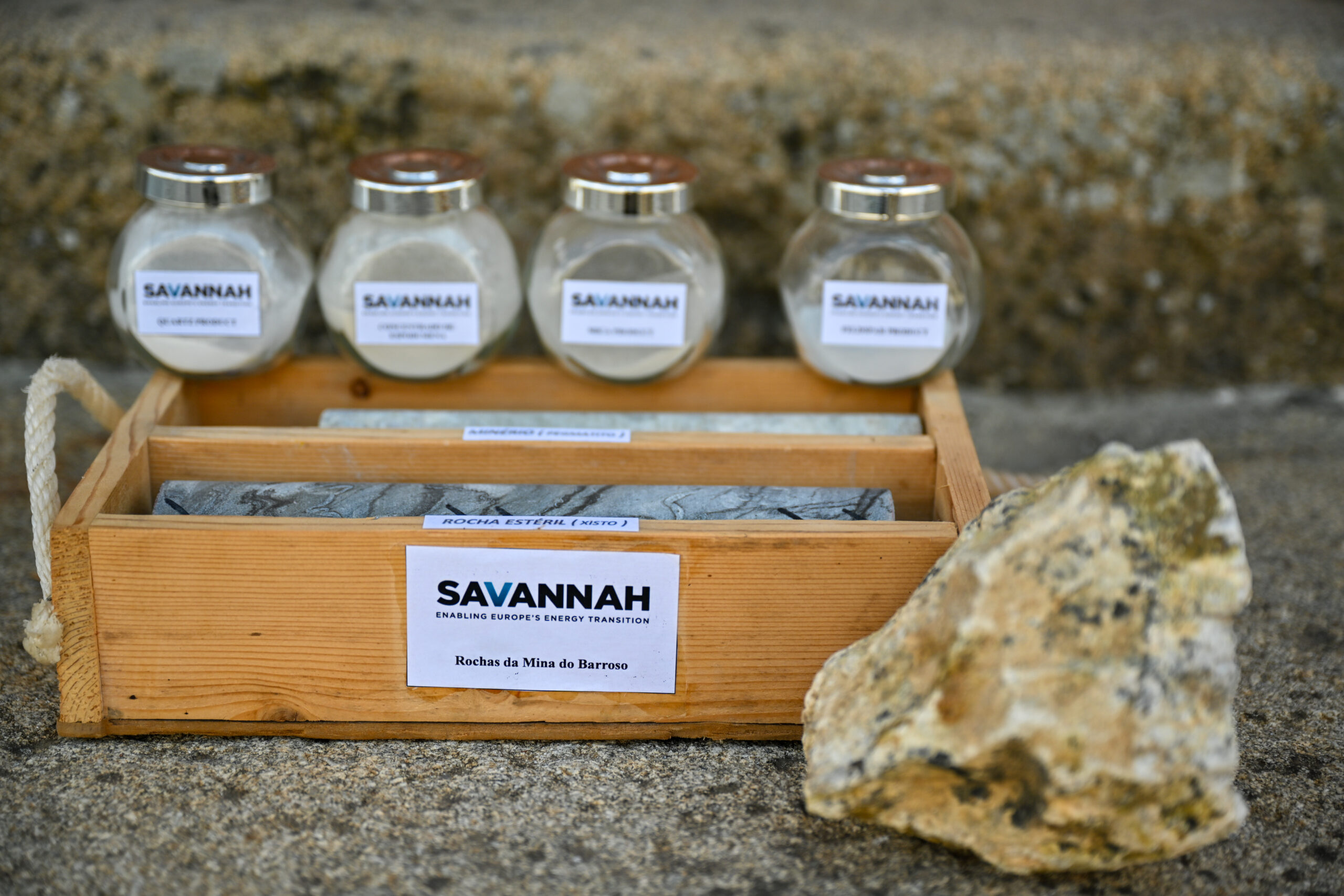

“Textbook example of how not to do a green transition”
London-listed Savannah Resources is planning to dig four open pit mines in the northern Barroso region to extract lithium from Europe’s largest known deposit. The company says it will extract enough lithium every year to produce around half a million batteries for electric vehicles.
However, local groups have staunchly opposed the mining project, citing concerns over waste management and water use as well as the impact of the mine on traditional agriculture in the area.
Earlier this year, a UN committee found that Portugal had failed to respect citizens’ rights to information and public participation in the case of the Barroso project. Portuguese authorities denied the breach.
Efforts to green lithium extraction face scrutiny over water use
The commission said it was satisfied with the project’s overall sustainability credentials and that campaign groups should take a case to their national court if they are concerned about the legality of any project.
“This decision shows that the EU is willing to trade rural lives and irreplaceable landscapes for a political headline,” said Nik Völker of MiningWatch Portugal. “The truth is, the Mina do Barroso mine offers minimal benefits and enormous risks: a textbook example of how not to do a green transition.”
Savannah Resources did not respond to a request for comment.
“Murky” standards make legal challenge hard
Simon Simanovski, a business and human rights attorney with German law firm Günther Rechtsanwälte, has advised dozens of communities affected by projects designated as “strategic” under the EU’s Critical Raw Materials Act over the past year.
For him, the commission’s response creates a disconnect between its role as a decision-making body and the responsibility for enforcing the bloc’s environmental laws, by pushing it to member states. That, he said, creates “murky standards”.
This, he added, will make it “really difficult” to challenge inadequate environmental safeguards through the courts. “It means that there is no effective judicial protection… and that the projects will happen,” he told Climate Home News.
However, Simanovski still expects some campaign groups to try filing a case before the general court of the European Court of Justice to challenge the European Commission’s response and ask it to review its assessment of the projects.
Simanovski represents communities in Serbia that are also challenging the “strategic” designation of the Jadar lithium mine – one of an additional 13 “strategic projects” located outside EU countries – which has seen massive local opposition.
The commission is expected to respond to requests to review those external strategic projects in January.
The post EU refuses to review “strategic” mineral projects for energy transition appeared first on Climate Home News.
EU refuses to review “strategic” mineral projects for energy transition
Climate Change
DeBriefed 28 November 2025: COP30’s ‘frustrating’ end; Asia floods; UK ‘emergency’ climate event
Welcome to Carbon Brief’s DeBriefed.
An essential guide to the week’s key developments relating to climate change.
This week
‘Lukewarm’ end to COP30
BYE BELÉM: The COP30 climate talks in Belém ended last weekend with countries agreeing on a goal to “triple” adaptation finance by 2035 and efforts to “strengthen” climate plans, Climate Home News reported. The final deal “fell short on the global transition away from oil, gas and coal”, the outlet said, as Brazil announced that it would bring forward voluntary roadmaps to phase out fossil fuels and deforestation, before the next COP. It was a “frustrating end” for more than 80 countries who wanted a roadmap away from fossil fuels to be part of the formal COP agreement, BBC News said.
WHAT HAPPENED?: Carbon Brief published its in-depth analysis of all the key outcomes from COP30, spanning everything from negotiations on adaptation, just transition, gender and “Article 6” carbon trading through to a round-up of pledges on various issues. Another Carbon Brief article summed up outcomes around food, forests, land and nature. Also, Carbon Brief journalists discussed the COP in a webinar held earlier this week.
ART OF THE DEAL: The “compromise” COP30 deal – known as the “global mutirão” – “exposed deep rifts over how future climate action should be pursued”, Reuters noted. The “last-ditch” agreement was reached after fossil-fuel wording negotiations between the EU and Saudi Arabia, according to the Guardian. Meanwhile, Carbon Brief revealed the “informal” list of 84 countries said to have “opposed” the inclusion of a fossil-fuel roadmap in the mutirão decision, but analysis of the list exposed contradictions and likely errors.
UNITY, SCIENCE, SENSE: The final agreement received “lukewarm praise”, said the Associated Press. Palau ambassador Ilana Seid, who chaired the coalition of small-island nations, told the newswire: “Given the circumstances of geopolitics today, we’re actually quite pleased…The alternative is that we don’t get a decision and that would have been [worse].” UN climate chief Simon Stiell said that amid “denial, division and geopolitics”, countries “chose unity, science and economic common sense”, reported the Press Trust of India.
Around the world
- Floods and landslides killed more than 200 people in Thailand and Indonesia this week, reported Bloomberg. At least 90 people also died in recent floods in Vietnam, said Al Jazeera.
- New measures to cut energy bills and a “pay-per-mile” electric-vehicle levy were among the announcements in the UK’s budget, said Carbon Brief.
- The Group of 20 (G20) leaders signed off on a declaration “addressing the climate crisis” and other issues, reported Reuters, which had no input from the US who boycotted last week’s G20 summit in South Africa.
- Canadian prime minister Mark Carney signed a deal with the province of Alberta “centred on plans for a new heavy oil pipeline”, said the Guardian, adding that Canadian culture minister and former environment minister, Steven Guilbeault, resigned from cabinet over the deal.
- Greenpeace analysis, covered by Reuters, found that permits for new coal plants in China are “on track to fall to a four-year low” in 2025.
27
The number of hours that COP30 talks went over schedule before ending in Belém last Saturday, making it the 11th-longest UN climate summit on record, according to analysis by Carbon Brief.
Latest climate research
- The risk of night-time deaths during heatwaves increased “significantly” over 2005-15 in sub-Saharan Africa | Science Advances
- Almost half of climate journalists surveyed showed “moderate to severe” symptoms of anxiety | Traumatology
- Lakes experienced “more severe” heatwaves than those in the atmosphere over the past two decades | Communications Earth & Environment
(For more, see Carbon Brief’s in-depth daily summaries of the top climate news stories on Monday, Tuesday, Wednesday, Thursday and Friday.)
Captured

The key COP30 agreement – termed the “global mutirão” – contained 69 inactive verbs, which require no action from countries, compared to 32 active ones. “Recognises”, “recalls” and “acknowledges” were used far more often than more active verbs, such as “decides”, “calls” and “requests”, showed Carbon Brief analysis.
Spotlight
Nine warnings from a UK climate and nature ‘emergency’ briefing
This week, Carbon Brief’s Orla Dwyer reports from an event where experts and campaigners sounded the alarm bell on climate change and nature loss.
Naturalist and broadcaster Chris Packham urged attendees at a climate and nature “emergency briefing” in London yesterday to “listen to the science” on climate change amid a “dangerous wave of misinformation and lies”.
The “first-of-its-kind” event heard from nine experts on the links between climate change, nature loss, health, food production, economics and national security.
Event host, Prof Mike Berners-Lee from Lancaster University, called for a “World War II level of leadership” to tackle the interconnected crises.
Hundreds of people showed up, including Green Party, Labour and Liberal Democrat MPs, leader of the Greens Zack Polanski, musician Brian Eno and actress Olivia Williams.
Here is a snapshot of what the nine speakers said in their short, but stark, presentations.
Prof Kevin Anderson, professor of energy at University of Manchester
Anderson focused on the risks of a warmer world and the sliver of emissions left in the global carbon budget, noting:
“We have to eliminate fossil fuels or temperatures will just keep going up.”
He urged a “Marshall-style” plan – referencing the 1948 post-war US plan to rebuild Europe – to ramp up actions on retrofitting, public transport and electrification.
Prof Nathalie Seddon, professor of biodiversity at University of Oxford
Nature is not a “nice to have”, but rather “critical national infrastructure”, Seddon told attendees. She called for the “need to create an economy that values nature”.
Prof Paul Behrens, British Academy global professor at University of Oxford
Behrens discussed the food security risks from climate change. Impacts such as poor harvests and food price inflation are “barely acknowledge[d]” in agricultural policy, he said.
He also emphasised the “unsustainable” land use of animal agriculture, which “occupies around 85% of total agricultural land” in the UK.
Prof Tim Lenton, chair in climate change and Earth system science at Exeter University
Lenton outlined the “plenty” of evidence that parts of the Earth system are hurtling towards climate tipping points that could push them irreversibly into a new state.
He discussed the possibility of the shutdown of the Atlantic Meridional Overturning Circulation, which he said could cause -20C winters in London. He also noted positive tipping points, such as momentum that led the UK to stop burning coal for electricity last year.

Prof Hayley Fowler, professor of climate change impacts at Newcastle University
One in four properties in England could be at risk of flooding by 2050, Fowler said, and winters are getting wetter.
She discussed extreme weather risks and listed the impacts of floods in recent years in Germany, Spain and Libya, adding:
“These events are not warnings of what might happen in the future. They’re actually examples of what is happening right now.”
Angela Francis, director of policy solutions at WWF-UK
Francis factchecked several claims made against climate action, such as the high cost of achieving net-zero.
She noted that the estimated cost for the UK to achieve net-zero is about £4bn per year, which is less than 0.2% of GDP.
Lieutenant general Richard Nugee, climate and security advisor
Discussing the risks climate change poses to national security, Nugee said:
“Climate change can be thought of as a threat multiplier, making existing threats worse or more frequent and introducing new threats. Climate shocks fuel global instability.”
Tessa Khan, environmental lawyer and executive director of Uplift
Khan said the rising cost of energy in the UK is “turning into a significant political risk for the energy transition”.
She discussed the cost of fossil-fuel dependency and the fact that these fuels cost money to burn, but renewable “input[s], sun or wind [are] free forever”.
Prof Hugh Montgomery, professor of intensive care medicine at University College London
Montgomery discussed the health and economic benefits of climate actions, such as eating less meat and using more public transport, noting:
“The climate emergency is a health emergency – and it’s about time we started treating it as one.”
Watch, read, listen
WATER WORRIES: ABC News spoke to three Iranian women about the impacts of Tehran’s water crisis amid the “worst drought in 60 years”.
CLIMATE EFFORT: The BBC’s Climate Question podcast looked at the main outcomes from COP30 and discussed the “future of climate action” with a team of panelists.
CRIMINAL BEHAVIOUR:New Scientist interviewed criminal psychologist Julia Shaw about the psychology behind environmental crimes.
Coming up
- 24 November-5 December: COP20 on international trade in endangered species of wild fauna and flora, Samarkand, Uzbekistan
- 29-30 November: First part of global youth environment assembly, Nairobi, Kenya
- 3-4 December: Second round of Egyptian parliamentary elections
- 5 December: World soil day, global
Pick of the jobs
- Aldersgate Group, head of policy | Salary: £56,650-£66,950 per year. Location: London
- Ofgem, climate resilience expert | Salary: £61,446-£86,547. Location: Cardiff, Glasgow or London
- Green Climate Fund, integrity risk management lead | Salary: $171,200. Location: Incheon, South Korea
- Isles of Scilly Wildlife Trust, project manager – seabird recovery | Salary: Up to £45,000 per year. Location: Isles of Scilly, UK
DeBriefed is edited by Daisy Dunne. Please send any tips or feedback to debriefed@carbonbrief.org.
This is an online version of Carbon Brief’s weekly DeBriefed email newsletter. Subscribe for free here.
The post DeBriefed 28 November 2025: COP30’s ‘frustrating’ end; Asia floods; UK ‘emergency’ climate event appeared first on Carbon Brief.
DeBriefed 28 November 2025: COP30’s ‘frustrating’ end; Asia floods; UK ‘emergency’ climate event
Climate Change
Revealed: Leak casts doubt on COP30’s ‘informal list’ of fossil-fuel roadmap opponents
A confused – and, at times, contradictory – story has emerged about precisely which countries and negotiating blocs were opposed to a much-discussed “roadmap” deal at COP30 on “transitioning away from fossil fuels”.
Carbon Brief has obtained a leaked copy of the 84-strong “informal list” of countries that, as a group, were characterised across multiple media reports as “blocking” the roadmap’s inclusion in the final “mutirão” deal across the second week of negotiations at the UN climate summit in Belém.
During the fraught closing hours of the summit, Carbon Brief understands that the Brazilian presidency told negotiators in a closed meeting that there was no prospect of reaching consensus on the roadmap’s inclusion, because there were “80 for and 80 against”.
However, Carbon Brief’s analysis of the list – which was drawn up informally by the presidency – shows that it contains a variety of contradictions and likely errors.
Among the issues identified by Carbon Brief is the fact that 14 countries are listed as both supporting and opposing the idea of including a fossil-fuel roadmap in the COP30 outcome.
In addition, the list of those said to have opposed a roadmap includes all 42 of the members of a negotiating group present in Belém – the least-developed countries (LDCs) – that has explicitly told Carbon Brief it did not oppose the idea.
Moreover, one particularly notable entry on the list, Turkey – which is co-president of COP31 – tells Carbon Brief that its inclusion is “wrong”.
Negotiating blocs
COP28, held in Dubai in 2023, had finalised the first “global stocktake”, which called on all countries to contribute to global efforts, including a “transition away from fossil fuels”.
Since then, negotiations on how to take this forward have faltered, including at COP29 in Baku, Azerbaijan, where countries were unable to agree to include this fossil-fuel transition as part of existing or new processes under the UN climate regime.
Ahead of the start of COP30, Brazilian president Luiz Inácio Lula da Silva made a surprise call for “roadmaps” on fossil-fuel transition and deforestation.
While this idea was not on the official agenda for COP30, it had been under development for months ahead of the summit – and it became a key point of discussion in Belém.
Ultimately, however, it did not become part of the formal COP30 outcome, with the Brazilian presidency instead launching a process to draw up roadmaps under its own initiative.
This is because the COP makes decisions by consensus. The COP30 presidency insisted that there was no prospect of consensus being reached on a fossil-fuel roadmap, telling closed-door negotiations that there were “80 for and 80 against”.
The list of countries supporting a roadmap as part of the COP30 outcome was obtained by Carbon Brief during the talks. Until now, however, the list of those opposed to the idea had not been revealed.
Carbon Brief understands that this second list was drawn up informally by the Brazilian presidency after a meeting attended by representatives of around 50 nations. It was then filled out to the final total of 84 countries, based on membership of negotiating alliances.
The bulk of the list of countries opposing a roadmap – some 39 nations – is made up of two negotiating blocs that opposed the proposal for divergent reasons (see below). Some countries within these blocs also held different positions on why – or even whether – they opposed the roadmap being included in the COP30 deal.
These blocs are the 22-strong Arab group – chaired in Belém by Saudi Arabia – and the 25 members of the “like-minded developing countries” (LMDCs), chaired by India.
For decades within the UN climate negotiations, countries have sat within at least one negotiating bloc rather than act in isolation. At COP30, the UN says there were 16 “active groups”. (Since its invasion of Ukraine, Russia has not sat within any group.)
The inclusion on the “informal list” (shown in full below) of both the LMDCs and Arab group is accurate, as confirmed by the reporting of the International Institute for Sustainable Development’s Earth Negotiations Bulletin (ENB), which is the only organisation authorised to summarise what has happened in UN negotiations that are otherwise closed to the media.
Throughout the fortnight of the talks, both the LMDCs and Arab group were consistent – at times together – in their resistance to proscriptive wording and commitments within any part of the COP30 deal around transitioning away from fossil fuels.
But the reasons provided were nuanced and varied and cannot be characterised as meaning both blocs simply did not wish to undertake the transition – in fact, all countries under the Paris Agreement had already agreed to this in Dubai two years ago at COP28.
However, further analysis by Carbon Brief of the list shows that it also – mistakenly – includes all of the members of the LDCs, bar Afghanistan and Myanmar, which were not present at the talks. In total, the LDCs represented 42 nations in Belém, ranging from Bangladesh and Benin through to Tuvalu and Tanzania.
Some of the LDC nations had publicly backed a fossil-fuel roadmap.
‘Not correct’
Manjeet Dhakal, lead adviser to the LDC chair, tells Carbon Brief that it is “not correct” that the LDCs, as a bloc, opposed a fossil-fuel roadmap during the COP30 negotiations.
He says that the group’s expectations, made public before COP, clearly identified transitioning away from fossil fuels as an “urgent action” to keep the Paris Agreement’s 1.5C goal “within reach”. He adds:
“The LDC group has never blocked a fossil-fuel roadmap. [In fact], a few LDCs, including Nepal, have supported the idea.”
Dhakal’s statement highlights a further confusing feature of the informal list – 14 countries appear on both of the lists of supporters and opposers. This is possible because many countries sit within two or more negotiating blocs at UN climate talks.
For example, Kiribati, Solomon Islands and Tuvalu are members of both the “alliance of small island states” (AOSIS) and the LDCs.
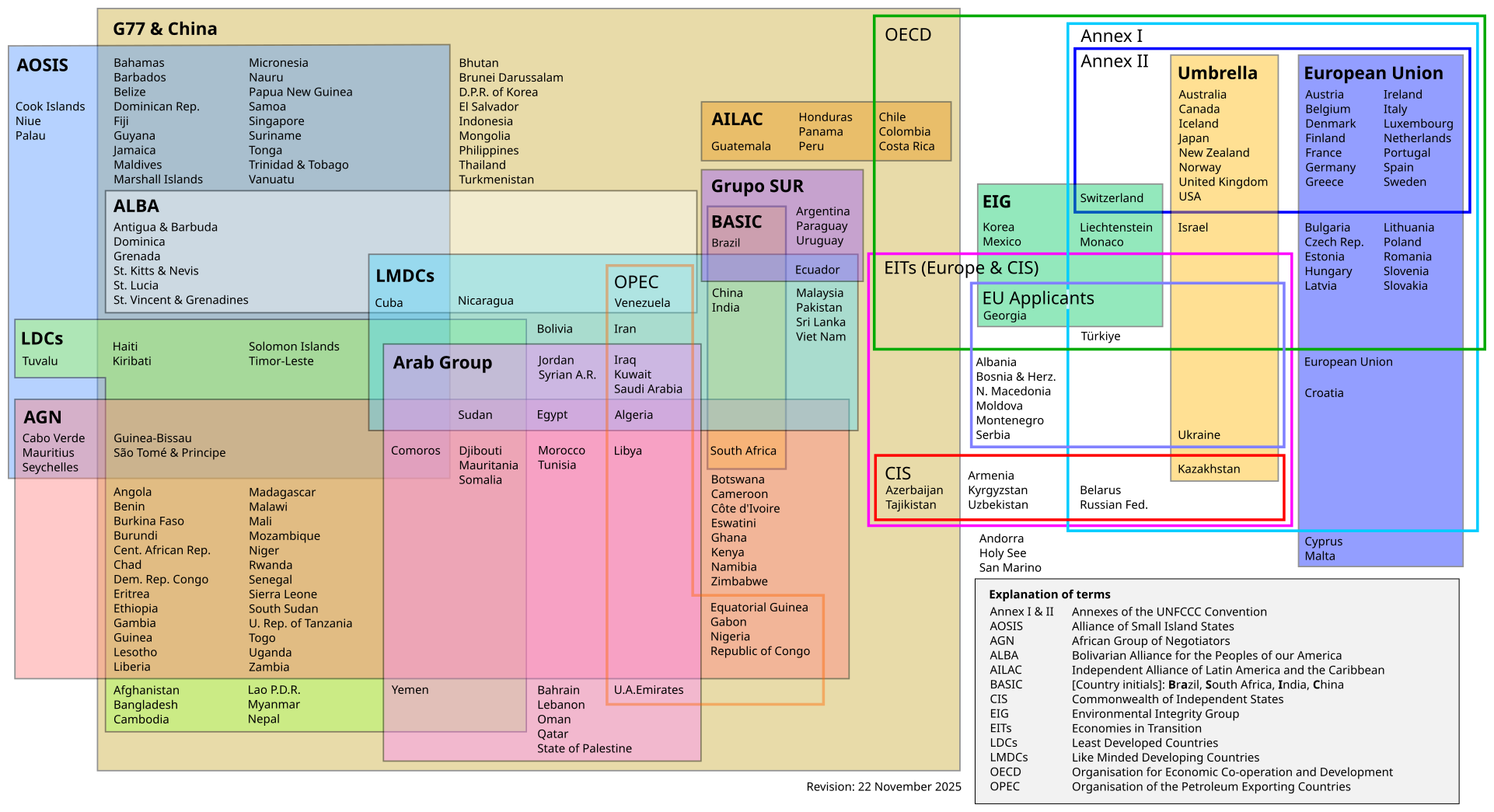
As is the case with the “informal list” of opposers, the list of supporters (which was obtained by Carbon Brief during the talks) is primarily made up of negotiating alliances.
Specifically, it includes AOSIS, the “environmental integrity group” (EIG), the “independent association of Latin America and the Caribbean” (AILAC) and the European Union (EU).
In alphabetical order, the 14 countries on both lists are: Bahrain; Bulgaria; Comoros; Cuba; Czech Republic; Guinea-Bissau; Haiti; Hungary; Kiribati; Nepal; Sierra Leone; Solomon Islands; Timor-Leste; and Tuvalu.
This obvious anomaly acts to highlight the mistaken inclusion of the LDCs on the informal list of opposers.
The list includes 37 of the 54 nations within the Africa group, which was chaired by Tanzania in Belém.
But this also appears to be a function of the mistaken inclusion of the LDCs in the list, many of which sit within both blocs.
Confusion
An overview of the talks published by the Guardian this week reported:
“Though [Brazil’s COP30 president André Corrêa do Lago] told the Guardian [on 19 November] that the divide over the [roadmap] issue could be bridged, [he] kept insisting 80 countries were against the plan, though these figures were never substantiated. One negotiator told the Guardian: ‘We don’t understand where that number comes from.’
“A clue came when Richard Muyungi, the Tanzanian climate envoy who chairs the African group, told a closed meeting that all its 54 members aligned with the 22-member Arab Group on the issue. But several African countries told the Guardian this was not true and that they supported the phaseout – and Tanzania has a deal with Saudi Arabia to exploit its gas reserves.”
Adding to the confusion, the Guardian also said two of the most powerful members of the LMDCs were not opposed to a roadmap, reporting: “China, having demurred on the issue, indicated it would not stand in the way [of a roadmap]; India also did not object.”
Writing for Climate Home News, ActionAid USA’s Brandon Wu said:
“Between rich country intransigence and undemocratic processes, it’s understandable – and justifiable – that many developing countries, including most of the Africa group, are uncomfortable with the fossil-fuel roadmap being pushed for at COP30. It doesn’t mean they are all ‘blockers’ or want the world to burn, and characterising them as such is irresponsible.
“The core package of just transition, public finance – including for adaptation and loss and damage – and phasing out fossil fuels and deforestation is exactly that: a package. The latter simply will not happen, politically or practically, without the former.”
Carbon Brief understands that Nigeria was a vocal opponent of the roadmap’s inclusion in the mutirão deal during the final hours of the closed-door negotiations, but that does not equate to it opposing a transition away from fossil fuels. This is substantiated by the ENB summary:
“During the…closing plenary…Nigeria stressed that the transition away from fossil fuels should be conducted in a nationally determined way, respecting [common, but differentiated responsibilities and respective capabilities].”
The “informal list” of opposers also includes three EU members – Bulgaria, the Czech Republic and Hungary.
The EU – led politically at the talks by climate commissioner Wopke Hoekstra, but formally chaired by Denmark – was reportedly at the heart of efforts to land a deal that explicitly included a “roadmap” for transitioning away from fossil fuels.
Carbon Brief understands that, as part of the “informal intelligence gathering” used to compile the list, pre-existing positions on climate actions by nations were factored in rather than only counting positions expressed at Belém. For example, Hungary and the Czech Republic were reported to have been among those resisting the last-minute “hard-fought deal” by the EU on its 2040 climate target and latest Paris Agreement climate pledge.
(Note that EU members Poland and Italy did not join the list of countries supporting a fossil-fuel roadmap at COP30.)
The remaining individual nations on the informal list either have economies that are heavily dependent on fossil-fuel production (for example, Russia and Brunei Darussalam), or are, like the US, currently led by right-leaning governments resistant to climate action (for example, Argentina).
Turkey is a notable inclusion on the list because it was agreed in Belém that it will host next year’s COP31 in Antalya, but with Australia leading the negotiation process. In contrast, Australia is on the 85-strong list of roadmap supporters.
However, a spokesperson for Turkey’s delegation in Belem has told Carbon Brief that it did not oppose the roadmap at COP30 and its inclusion on the list is “wrong”.

Media characterisations
Some media reporting of the roadmap “blockers” sought to identify the key proponents.
For example, the Sunday Times said “the ‘axis of obstruction’ – Saudi Arabia, Russia and China – blocked the Belém roadmap”.
Agence France-Presse highlighted the views of a French minister who said: “Who are the biggest blockers? We all know them. They are the oil-producing countries, of course. Russia, India, Saudi Arabia. But they are joined by many emerging countries.”
Reuters quoted Vanuatu’s climate minister alleging that “Saudi Arabia was one of those opposed”.
The Financial Times said “a final agreement [was] blocked again and again by countries led by Saudi Arabia and Russia”.
Bloomberg said the roadmap faced “stiff opposition from Arab states and Russia”.
Media coverage in India and China has pushed back at the widespread portrayals of what many other outlets had described as the “blockers” of a fossil-fuel roadmap.
The Indian Express reported:
“India said it was not opposed to the mention of a fossil-fuel phaseout plan in the package, but it must be ensured that countries are not called to adhere to a uniform pathway for it.”
Separately, speaking on behalf of the LMDCs during the closing plenary at COP30, India had said: “Adaptation is a priority. Our regime is not mitigation centric.”
China Daily, a state-run newspaper that often reflects the government’s official policy positions, published a comment article this week stating:
“Over 80 countries insisted that the final deal must include a concrete plan to act on the previous commitment to move beyond coal, oil, and natural gas adopted at COP28…But many delegates from the global south disagreed, citing concerns about likely sudden economic contraction and heightened social instability. The summit thus ended without any agreement on this roadmap.
“Now that the conference is over, and emotions are no longer running high, all parties should look objectively at the potential solution proposed by China, which some international media outlets wrongly painted as an opponent to the roadmap.
“Addressing an event on the sidelines of the summit, Xia Yingxian, deputy head of China’s delegation to COP30, said the narrative on transitioning away from fossil fuels would find greater acceptance if it were framed differently, focusing more on the adoption of renewable energy sources.”
Speaking to Carbon Brief at COP30, Dr Osama Faqeeha, Saudi Arabia’s deputy environment minister, refused to be drawn on whether a fossil-fuel roadmap was a red line for his nation, but said:
“I think the issue is the emissions, it’s not the fuel. And our position is that we have to cut emissions regardless.”
Neither the Arab group nor the LMDCs responded to Carbon Brief’s invitation to comment on their inclusion on the list.
The Brazilian COP30 presidency did not respond at the time of publication.
While the fossil-fuel roadmap was not part of the formal COP30 outcome, the Brazilian presidency announced in the closing plenary that it would take the idea forward under its own initiative, drawing on an international conference hosted in Colombia next year.
Corrêa do Lago told the closing plenary:
“We know some of you had greater ambitions for some of the issues at hand…As president Lula said at the opening of this COP, we need roadmaps so that humanity, in a just and planned manner, can overcome its dependence on fossil fuels, halt and reverse deforestation and mobilise resources for these purposes.
“I, as president of COP30, will therefore create two roadmaps, one on halting and reverting deforestation, another to transitioning away from fossil fuels in a just, orderly and equitable manner. They will be led by science and they will be inclusive with the spirit of the mutirão.
“We will convene high level dialogues, gathering key international organisations, governments from both producing and consuming countries, industry workers, scholars, civil society and will report back to the COP. We will also benefit from the first international conference for the phase-out of fossil fuels, scheduled to take place in April in Colombia.”
Fossil-fuel roadmap
‘Supporters’
Both ‘supporter’ and ‘opposer’
‘Opposers’
Additional reporting by Daisy Dunne.
The post Revealed: Leak casts doubt on COP30’s ‘informal list’ of fossil-fuel roadmap opponents appeared first on Carbon Brief.
Revealed: Leak casts doubt on COP30’s ‘informal list’ of fossil-fuel roadmap opponents
-
Climate Change4 months ago
Guest post: Why China is still building new coal – and when it might stop
-
Greenhouse Gases4 months ago
Guest post: Why China is still building new coal – and when it might stop
-
Climate Change2 years ago
Spanish-language misinformation on renewable energy spreads online, report shows
-

 Greenhouse Gases2 years ago
Greenhouse Gases2 years ago嘉宾来稿:满足中国增长的用电需求 光伏加储能“比新建煤电更实惠”
-
Climate Change Videos2 years ago
The toxic gas flares fuelling Nigeria’s climate change – BBC News
-

 Climate Change2 years ago
Climate Change2 years ago嘉宾来稿:满足中国增长的用电需求 光伏加储能“比新建煤电更实惠”
-

 Carbon Footprint2 years ago
Carbon Footprint2 years agoUS SEC’s Climate Disclosure Rules Spur Renewed Interest in Carbon Credits
-
Renewable Energy5 months ago
US Grid Strain, Possible Allete Sale


